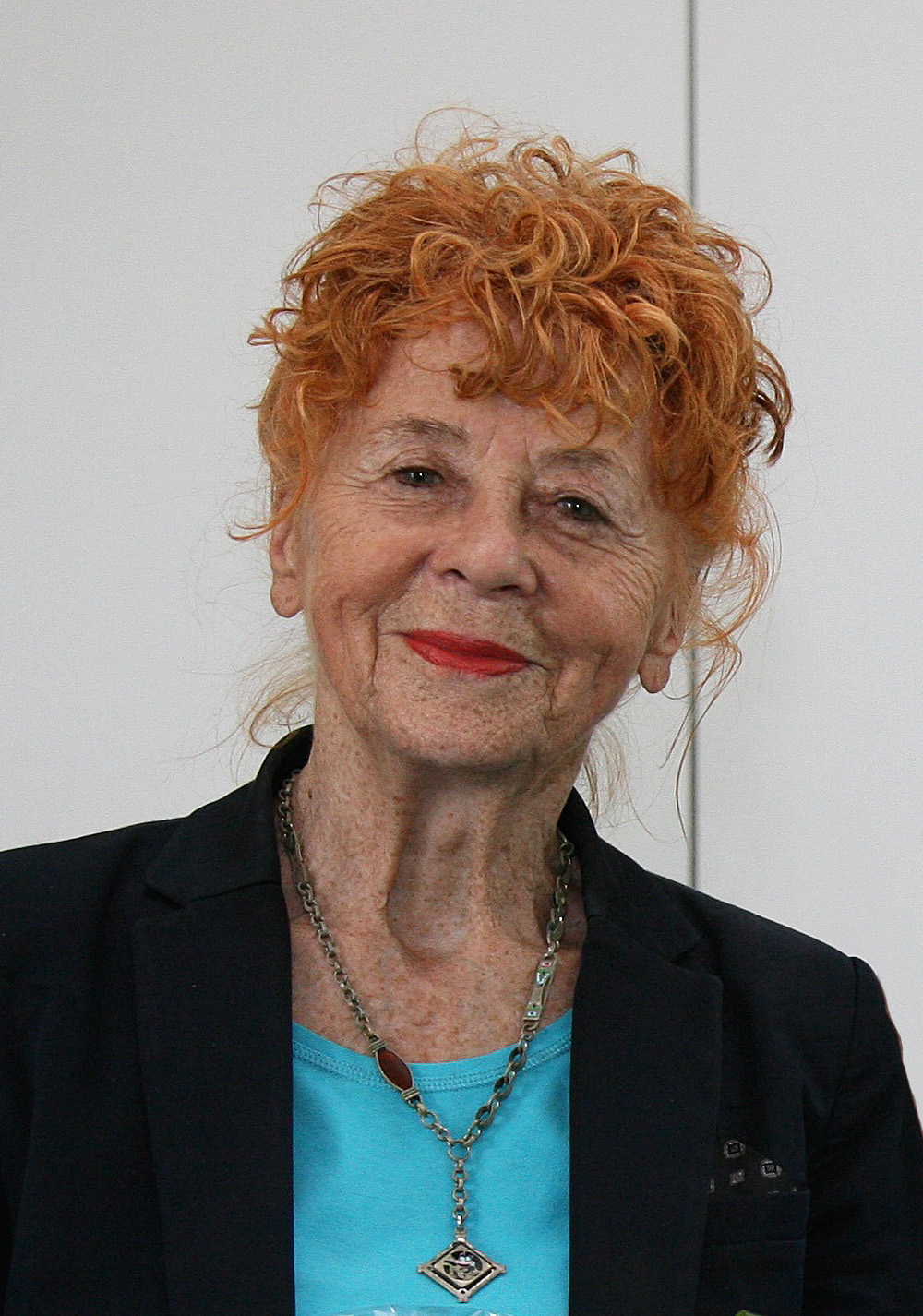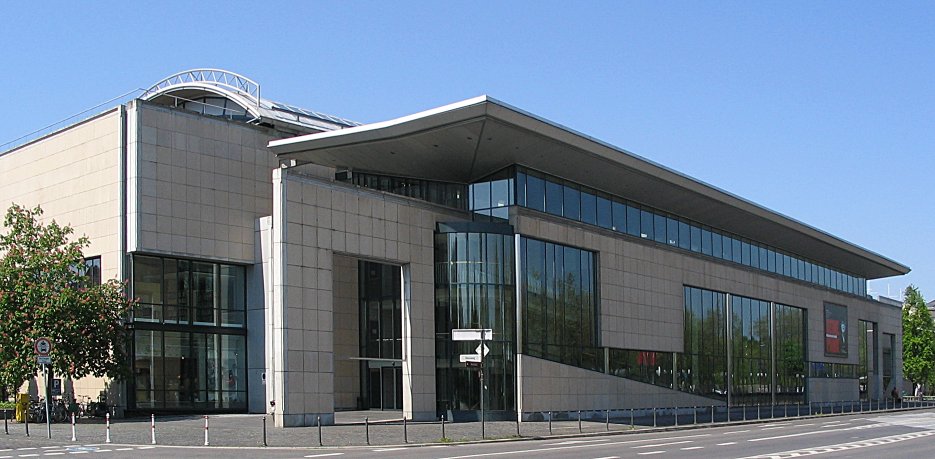|
Herlinde Koelbl
Herlinde Koelbl (born 31 October 1939) is a German photographic artist, author and documentary filmer. Her comprehensive work is characterized above all by long-term photographic projects, often complemented by in-depth interviews. She is particularly interested in creating portraits of milieus and people. Herlinde Koelbl has received a number of awards for her photographic work, for example the Dr Erich Salomon Prize in 2001. Since 2009, she has regularly worked as an author and photographer for ZEIT magazine, in the column "What saved me". Biography Herlinde Koelbl was born in Lindau on Lake Constance, Germany, 1939, and grew up there. She studied fashion design in Munich and worked in the field, while becoming a mother of four. In 1975, she discovered her love for photography and taught herself all the necessary techniques. She taught and gave lectures at the Parsons School in New York, the University of Shanghai, China, the College of the Arts, Sydney, the Art School ... [...More Info...] [...Related Items...] OR: [Wikipedia] [Google] [Baidu] |
Stern (magazine)
''Stern'' (, German for "Star") is an illustrated, broadly left-liberal, weekly current affairs magazine published in Hamburg, Germany, by Gruner + Jahr, a subsidiary of Bertelsmann. Under the editorship (1948–1980) of its founder Henri Nannen, it attained a circulation of between 1.5 and 1.8 million, the largest in Europe's for a magazine of its kind. Unusually for a popular magazine in post-war West Germany, and most notably in the contributions to 1975 of Sebastian Haffner, ''Stern'' investigated the origin and nature of the preceding tragedies of German history. In 1983, however, its credibility was seriously damaged by its purchase and syndication of the forged Hitler Diaries. A sharp drop in sales anticipated the general fall in newsprint readership in the new century. By 2019, circulation had fallen under half a million. History and profile Journalistic style Henri Nannen produced the first 16-page issue (with the actress Hildegard Knef [...More Info...] [...Related Items...] OR: [Wikipedia] [Google] [Baidu] |
Goldene Kamera
The Goldene Kamera ("Golden Camera") is an annual German film and television award, awarded by the Funke Mediengruppe. The award show is usually held in early February in Hamburg, but has also taken place in Berlin in the past. The gold-plated silver award model was created by Berlin artist Wolfram Beck. It is high and weighs around . History The award was first presented in 1966 as a strictly German television award. Since 1987, it has also been awarded to international stars. In 1995, the categories expanded to pop music, pop groups and to more public interests. In 2019, a 'Climate Action Award' was given to Greta Thunberg. In September 2019, Funke Mediengruppe announced the end of the traditional award for 2020. Due to a change in media consumption preferences of their audience in the course of digitization, the manager of Funke's magazine division said that the group would instead focus on digital content like the "YouTube Goldene Kamera Digital Award". The final 'Gol ... [...More Info...] [...Related Items...] OR: [Wikipedia] [Google] [Baidu] |
Order Of Merit Of The Federal Republic Of Germany
The Order of Merit of the Federal Republic of Germany (german: Verdienstorden der Bundesrepublik Deutschland, or , BVO) is the only federal decoration of Germany. It is awarded for special achievements in political, economic, cultural, intellectual or honorary fields. It was created by the first President of the Federal Republic of Germany, Theodor Heuss, on 7 September 1951. Colloquially, the decorations of the different classes of the Order are also known as the Federal Cross of Merit (). It has been awarded to over 200,000 individuals in total, both Germans and foreigners. Since the 1990s, the number of annual awards has declined from over 4,000, first to around 2,300–2,500 per year, and now under 2,000, with a low of 1752 in 2011. Since 2013, women have made up a steady 30–35% of recipients. Most of the German federal states (''Länder'') have each their own order of merit as well, with the exception of the Free and Hanseatic Cities of Bremen and Hamburg, which rejec ... [...More Info...] [...Related Items...] OR: [Wikipedia] [Google] [Baidu] |
Corine Literature Prize
The Corine – International Book Prize, as it is officially called, is a German literature prize created by the Bavarian chapter of the Börsenverein des Deutschen Buchhandels, first awarded in 2001. It is awarded to German and international "authors for excellent literary achievements and their recognition by the public." The award announced on its website that it would take a break for 2012 and relaunch in 2013, but has not returned . Trophy The "Corine" trophy is a figurine produced by the Nymphenburg Porcelain Manufactory. "Corine" was first manufactured in 1760 as part of a sixteen-figure set of ''commedia dell'arte'' performers in porcelain, designed by the German modeller Franz Anton Bustelli (1723–1763). Winners 2001 * Fiction: Zeruya Shalev for '' Mann und Frau'' * Fiction: Henning Mankell for '' One Step Behind'' * Non-fiction: Pascale N. Bercovitch for '' Das Lächeln des Delphins'' * Non-fiction: Simon Singh for ''The Code Book'' * Illustrated Non-fiction: T ... [...More Info...] [...Related Items...] OR: [Wikipedia] [Google] [Baidu] |
Martin-Gropius-Bau
Martin-Gropius-Bau, commonly known as Gropius Bau, is an important exhibition building in Berlin, Germany. Originally a museum of applied arts, the building has been a listed historical monument since 1966. It is located at 7 Niederkirchnerstraße in Berlin-Kreuzberg, History and architecture The building was erected between 1877 and 1881 by the architects Martin Gropius, a great uncle of Walter Gropius, and Heino Schmieden in the neo-Renaissance style. The building officially opened in 1881.Berliner Festspiele - Martin-Gropius-Bau . Retrieved 30 January 2018 The ground plan is quadratic (length of each side c. 70 m; building height c. 26 m). The exhibition rooms surround an imposing atrium decorated with mosaics and the |
Haus Der Geschichte
Haus der Geschichte (officially ''Haus der Geschichte der Bundesrepublik Deutschland'', i.e. "House of the History of the Federal Republic of Germany") is a museum of contemporary history in Bonn, Germany. With around one million visitors every year, it is one of the most popular German museums. The Haus der Geschichte is, as well as the "Zeitgeschichtliches Forum Leipzig", the "Tränenpalast" am Bahnhof Friedrichstraße and the "Museum in the Kulturbrauerei" part of the ''Haus der Geschichte der Bundesrepublik Deutschland Foundation''. The foundation's place of business is Bonn. In its permanent exhibition, the Haus der Geschichte presents German history from 1945 until the present. Numerous temporary exhibitions emphasize different features. The Haus der Geschichte also organizes guided tours of the Palais Schaumburg (has been closed since August 2013 because of building restoration), the Chancellor's bungalow and the former place of the Federal Assembly. Moreover, the museum ... [...More Info...] [...Related Items...] OR: [Wikipedia] [Google] [Baidu] |
Haus Der Kunst
The ''Haus der Kunst'' (, ''House of Art'') is a non-collecting modern and contemporary art museum in Munich, Germany. It is located at Prinzregentenstraße 1 at the southern edge of the Englischer Garten, Munich's largest park. History Nazi Germany The building was constructed from 1933 to 1937 following plans of architect Paul Ludwig Troost as Nazi Germany's first monumental structure of Nazi architecture and as Nazi propaganda. The museum, then called ''Haus der Deutschen Kunst'' ("House of German Art"), was opened on 18 July 1937 as a showcase for what the Nazi Party regarded as Germany's finest art, with celebrations including a historical pageant and a military parade. The inaugural exhibition was the ''Große Deutsche Kunstausstellung'' ("Great German Art Exhibition"), which was intended as an edifying contrast to the condemned modern art on display in the concurrent Degenerate Art Exhibition. On 15 and 16 July 1939, the ''Große Deutsche Kunstausstellung'' inside ... [...More Info...] [...Related Items...] OR: [Wikipedia] [Google] [Baidu] |
Deutsches Historisches Museum
The German Historical Museum (german: Deutsches Historisches Museum), known by the acronym DHM, is a museum in Berlin, Germany devoted to German history. It describes itself as a place of "enlightenment and understanding of the shared history of Germans and Europeans". It is often viewed as one of the most important museums in Berlin and is one of the most frequented. The museum is located in the Zeughaus (armoury) on the Unter den Linden as well as in the adjacent Exhibition Hall designed by I. M. Pei. The German Historical Museum is under the legal form of a foundation registered by the Federal Republic of Germany. Its highest-ranking body is the Board of Trustees (Kuratorium) with representatives of the federal government, the German Bundestag (Parliament) and the governments of the German Länder, or states. Founding and history The museum was founded on 28 October 1987, on the occasion of the 750th anniversary of the founding of Berlin; it was inaugurated in the Reichst ... [...More Info...] [...Related Items...] OR: [Wikipedia] [Google] [Baidu] |
Grimme-Preis
The Grimme-Preis ("Grimme Award"; prior to 2011: Adolf-Grimme-Preis) is one of the most prestigious German television awards. It is named after the first general director of Nordwestdeutscher Rundfunk, Adolf Grimme.Adolf Grimme short biography Fernsehmuseum Hamburg. Retrieved 28 January 2012 It has been referred to in ''Kino'' magazine as the "German TV Oscar". The awards ceremony takes place annually at Theater Marl in , and is hosted by the Grimme-Institut. Since 1964, it awards productions "that use the specific possibilities of the medium of television in an extraordinary manner ... [...More Info...] [...Related Items...] OR: [Wikipedia] [Google] [Baidu] |
Deutscher Kritikerpreis
Deutscher Kritikerpreis was a cultural prize awarded annually by the Association of German Critics (Verband der Deutschen Kritiker e.V.) from 1951 to 2009. This award was given for outstanding contributions in the fields of architecture, the fine arts, television, film, radio, literature, music, dance and theater. According to the guidelines of the Association, "the undiscovered, too little appreciated or a life's work" ("das noch Unentdeckte, zu wenig Gewürdigte oder ein Lebenswerk") had to be emphasized as far as possible. The award was discontinued with the dissolution of the Association in 2010. "Verband der deutschen Kritiker e. V." ''Theaterforschung' References External links Theaterforschung: Verband der deutschen Kritiker e. V. German literary awards Awards established in 1951 1951 establishments in Germany Awards disestablished in 2009 2009 disestablishments in Germany {{Germany-lit-award-stub ... [...More Info...] [...Related Items...] OR: [Wikipedia] [Google] [Baidu] |
Joschka Fischer
Joseph Martin "Joschka" Fischer (born 12 April 1948) is a German retired politician of the Alliance 90/The Greens. He served as the foreign minister and as the vice-chancellor of Germany in the cabinet of Gerhard Schröder from 1998 to 2005. Fischer has been a leading figure in the German Greens since the 1970s, and according to opinion polls, he was the most popular politician in Germany for most of the Schröder government's duration. Following the September 2005 election, in which the Schröder government was defeated, he left office on 22 November 2005. In September 2010 he supported the creation of the Spinelli Group, a europarliamentarian initiative founded with a view to reinvigorate efforts to federalise the European Union. Early life Fischer was born in Gerabronn in Württemberg-Baden, the third child of a butcher, whose family had lived in Budakeszi, Hungary, for several generations. Fischer's family had to leave Hungary in 1946 after it was occupied by the Soviet Unio ... [...More Info...] [...Related Items...] OR: [Wikipedia] [Google] [Baidu] |




